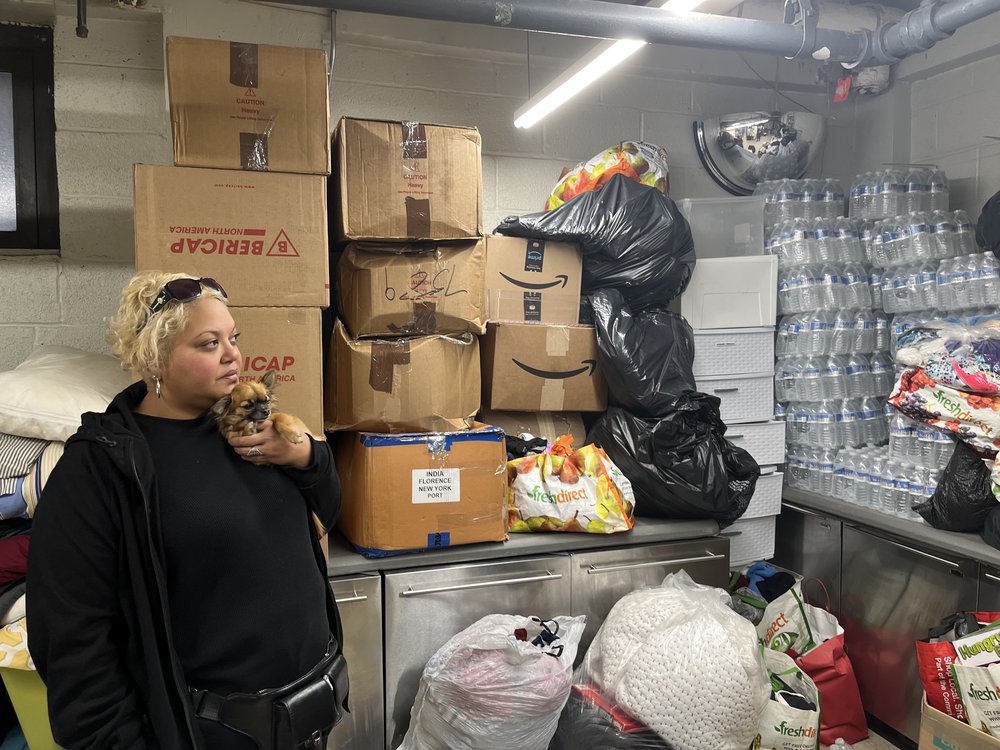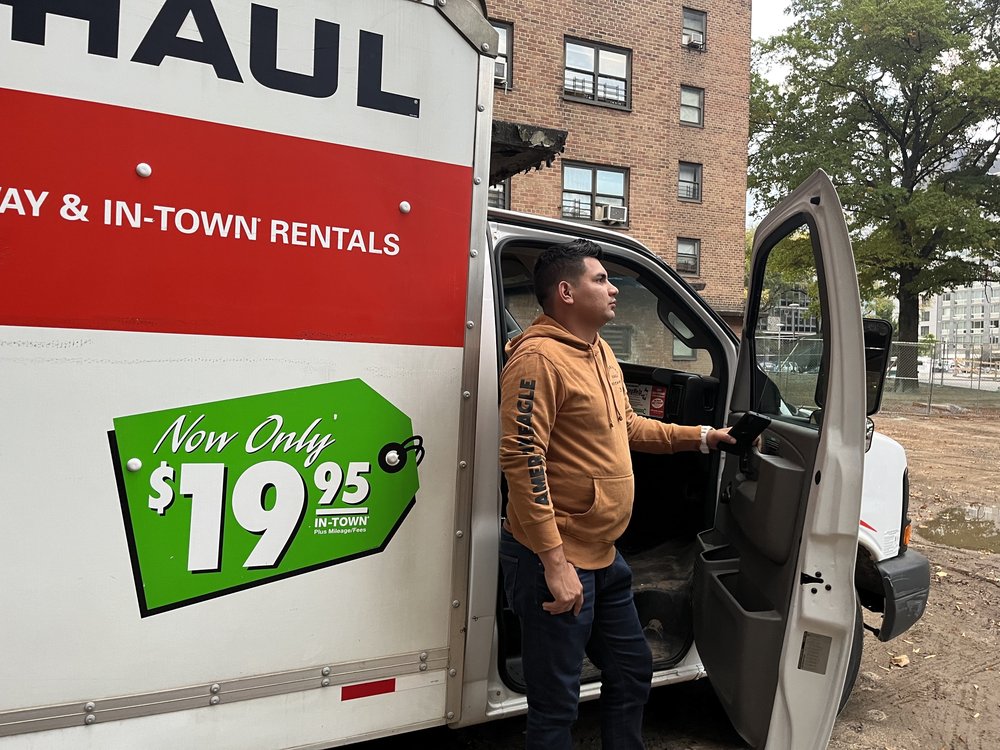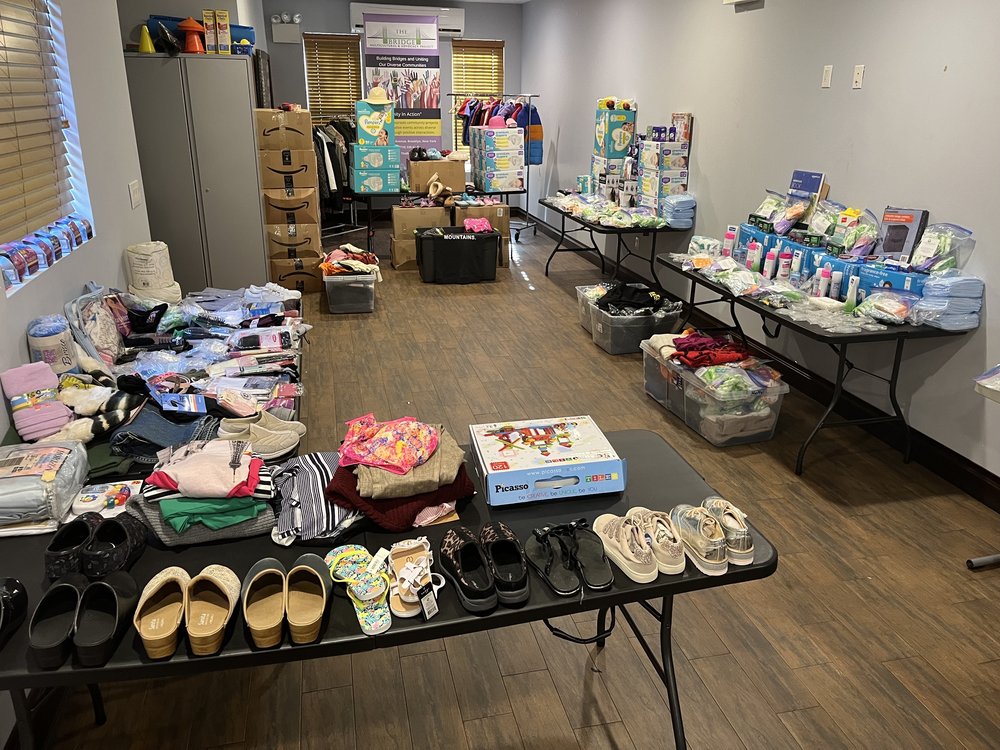'A moral responsibility': What NYC's community aid groups need most to help migrants
Oct. 19, 2022, 5 a.m.
A diverse, citywide network of grassroots organizations, immigrant rights groups and faith-based institutions have been providing an array of support to the more than 18,000 asylum seekers.

Monday evening, Adama Bah rushed off to greet buses full of migrants arriving at the Port Authority, just as she had that morning and on most days over the past several months. Before heading out, the immigrant rights activist stopped by the Baruch Houses, a public housing development on the Lower East Side, where she loaded up her car with food, water and other supplies to hand out.
Camille Napoleon, the president of the Baruch Houses Tenants’ Association, oversees the space used to store donations at the housing complex. She has taken the extraordinary step of temporarily housing Venezuelan asylum seekers in her apartment – and they also serve as volunteers, sorting donations and handing out food and clothing to other recent arrivals.
“These are people who have literally slept in a jungle, on the side of a river,” Napoleon said of the migrants she’s fostering. “They're grateful just to have a sleeping bag or be on a couch.”
Tenants of the housing complex and others from around the city have donated items, ranging from clothes to backpacks and school supplies, which were distributed at the Port Authority and the shelters where most of the newly arrived migrants were being housed.
This was just one piece of a diverse, citywide network of grassroots organizations, immigrant rights groups, and faith-based institutions that have been providing an array of support to the more than 18,000 asylum seekers – many from Venezuela – who have arrived in New York City since this past spring.
Together, these groups offer legal assistance, MetroCards, food, clothes, hygiene products, prepaid cell phones and help accessing services such as health care and education. Some organizers are simultaneously advocating for better shelter conditions for new arrivals and more humane immigration policies.
They said they anticipated to continue providing assistance for months to come. Despite support from the New Yorkers who have been donating and volunteering so far, many have been stretched thin.
Folks do not have the capacity for the complex case management that these individuals and families require.
Alana Cantillo, New York Immigration Coalition
“Folks are very overwhelmed,” said Alana Cantillo, vice president of advocacy at the New York Immigration Coalition, which represents about 200 immigrant rights groups. “Folks do not have the capacity for the complex case management that these individuals and families require.”
While scrambling to provide shelter for all of those coming in, often in hotels, Mayor Eric Adams has pleaded for help from the federal government. He declared a state of emergency over the situation on Oct. 7.
“This is a humanitarian crisis that started with violence and instability in South America and is being accelerated by American political dynamics,” Adams said at the time.
He added that the city will spend $1 billion on housing and social services for this population by the end of the city’s fiscal year, requesting financial assistance from Gov. Kathy Hochul to help manage the costs. But it was unclear how much public money will specifically go toward helping community groups sustain aid work.
The Mayor’s Office of Immigrant Affairs did not respond to a request for comment.

President Joe Biden recently announced that he will take action to stem the tide of people coming into the United States through Mexico by invoking the controversial Title 42, a policy used to turn people away at the border.
But even if the flow of migrants to the five boroughs slows, the city is still working to support thousands of arrivals — especially since obtaining a work permit can take months after applying for asylum.
The number of buses arriving each day remains high, according to volunteers who greet them. Many are coming from Texas, where Gov. Greg Abbott has sought to make a political point by busing migrants to New York.
Yohandry Manares, one of the Venezuelans staying with Napoleon, said he is seeking a work permit — a process that New York officials are urging the federal government to make more efficient. In the meantime, he said, he is happy to be able to help others in his situation.
“It’s a privilege for me to do this kind of work because I know what it’s like to arrive in New York with nothing,” Manares, 25, said in Spanish outside the Baruch Houses donation site.
What is needed most?
Asked what items are in highest demand, many organizations of those accepting donations said coats and warm clothing are most important, and many specified that they only want to receive new or like-new items – in some cases, because they take less effort to sort through and clean, but also as a sign of respect for the people who would be receiving them.
Napoleon said there was a need for small- and medium-sized clothes for men, since many donations so far were for women.
They’re also calling for hygiene products, and depending on the shelter populations they’re serving, items such as children’s clothes and diapers. Henesse Viera, a volunteer with a group called Artists Athletes Activists that has also been greeting migrants, said strollers were in short supply.
Shoes are also a major concern.

Masbia, a Jewish nonprofit that operates soup kitchens and food pantries in Brooklyn and Queens, previously ran a kind of makeshift free shoe store at the Port Authority. The group distributed about 3,000 new pairs of shoes to arriving migrants, according to Alexander Rapaport, Masbia’s executive director.
“We literally cleaned out 11 Walmarts in New Jersey from shoes,” Rapaport said.
But he said the organization had largely taken a break from its work over the Jewish high holiday season in order to regroup. He said he was figuring out how the nonprofit will fit into the city’s patchwork of aid for asylum seekers moving forward.
Where money is going, and where city officials are helping
The city has recently started to play a bigger role in coordinating aid efforts. Adams’ administration opened a navigation center in mid-September where asylum seekers can access legal services and other types of assistance. And the Mayor’s Office of Faith Based and Community Partnerships has designated several donation sites throughout the five boroughs that can then either bring items directly to nearby shelters or have them redistributed from the city’s central warehouse in Long Island City.
Last week, people operating these sites reported a mixed response so far. Some organizers who spoke to Gothamist said they worried that the call for community support had been drowned out by the political narrative around this wave of asylum seekers.
But at The Bridge, a multi-faith organization in Flatbush, it’s clear that some New Yorkers have come through in force. On Monday evening, Mark Appel, the organization’s founder, showed off a basement room stacked with neatly sorted donations of feminine hygiene products, clothes, shoes, and other necessities.
He said he hopes to provide donations to nearby shelters on a weekly basis in the coming months.

“As long as they’re in this country, for whatever political reasons, we have a moral responsibility to feed them and clothe them,” Appel said of the asylum seekers.
The Bridge is also answering the city’s call for faith-based groups to “adopt a shelter.” He said he is planning to deliver warm meals to a nearby facility on Kings Highway — and invite the children there to participate in gymnastics classes at the center and other community building activities.
While many groups are committed to providing aid on an ongoing basis, some expressed concerns about how they will sustain it.
The city tapped the United Way of NYC to operate an emergency fund for asylum seekers. United Way is accepting monetary donations and distributing them among aid organizations. So far, it has provided funding to four community-based groups – Viera’s Artists Athletes Activists, Team TLC NYC, the Gambian Youth Organization and El Puente – and said it will fund other organizations, including soup kitchens and pantries.
A United Way spokesperson would not say how much money it has distributed so far. But the funding for Artists Athletes Activists and Team TLC has supported the work that Napoleon and Bah have been doing, since they work with those organizations.
Bah said a lot of the money coming in now is just covering costs that she and other volunteers already paid for out of their own pockets, such as renting a U-Haul to transport goods. “This funding came late, but we’re thankful for it,” Bah said. “But we’re going to be needing more funds, more resources.”
Some of the groups providing legal services and other support already receive some amount of public funding. But it’s unclear how much the city will amp up its monetary support for these groups to help efforts moving forward.
You arrive here with a lot of hope, with a lot of expectations, with fears, with all of those things.
Edwar Borrero, one of the Venezuelans volunteering at the Baruch Houses
New York City has contracted with the Catholic Charities of New York to operate the navigation center – and one organization providing assistance at the center said it received a grant from Catholic Charities to support its work. But neither Catholic Charities nor the Mayor’s Office of Immigrant Affairs responded to a request for comment about whether they are already administering funding to community-based organizations helping asylum seekers.
Meanwhile, some private foundations are stepping up. The Bronx Community Foundation, for instance, has provided nearly $200,000 so far to groups providing emergency food, legal services and other types of assistance.
While a lot of the work has fallen on the shoulders of community groups and good samaritans, earlier this month the mayor said his administration was looking at “formalizing” a plan that would allow New Yorkers to house asylum seekers.
“Some people have spare apartments, some people have rooms that they want to share. New Yorkers want to help and so we want to make sure that we do it in a legal way that allows people to help,” Adams said.
For those who are just arriving in New York City after trekking thousands of miles from home, these groups make a big difference.
“You arrive here with a lot of hope, with a lot of expectations, with fears, with all of those things,” said Edwar Borrero, one of the Venezuelans volunteering at the Baruch Houses, who arrived a little over two months ago. “But I think the most important thing is to find someone who supports you, who doesn’t give you their back but gives you their hand. And that’s what I’ve felt in the time I’ve been here.”